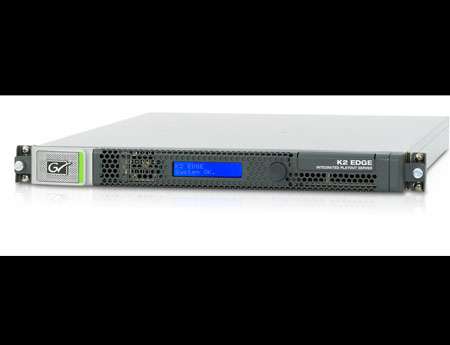Finding New Ways To Weather the Storms

Seemingly unpredictable tornadoes and superstorm weather systems such as Hurricane Sandy have produced untold amounts of damage in recent years, and stations—trying to both inform viewers and remain safe—have not been spared. Thankfully, there is actually some good news in the forecast for broadcasters and cable channels, as a number of technological developments have made disaster recovery a more manageable cost.
“There has definitely been an uptick in interest in disaster recovery systems for playout,” says Charlie Dunn, senior VP of global customer solutions at Grass Valley.
Dunn cites both lower costs and newer, less-expensive channel-in-a-box or integrated playout systems as helping fuel the trend. In the past, it might have cost companies $200,000 to $400,000 for backing up playout systems for each channel. “At that price, you were better off getting insurance,” Dunn says. “But now you can buy a package for about $25,000 a channel. That has made disaster recovery a lot more realistic idea.”
Improved archive technologies have also made it easier for companies to replicate their content. “We’ve made it so [much easier] to create two copies of an LTO [linear tape-open storage] that the majority of our customers are doing that,” creating one copy for their library and perhaps storing another remotely, says Phil Storey, CEO of XenData.
Meanwhile, the development and widespread availability of high-speed networks and the industry’s long-term move to software, IT technologies and cloud-based systems is helping with disaster recovery systems, Dunn and others say.
The Cloud Leads to Clearer Skies
Increasingly, stations are looking for ways to provide playout and other functions in the cloud by using software and commodity IT hardware, notes Stephen Smith, product manager, Harris Broadcast. This would allow stations to synchronize content between different locations and rely on these cloud-based systems as a backup if their main facility goes down.
Broadcasting & Cable Newsletter
The smarter way to stay on top of broadcasting and cable industry. Sign up below
“Channel-in-the-box gives you a fail-safe option today, but over time there will be a big push to get rid of the box so that everything is in the cloud,” Smith says.
These networks would also allow broadcasters and programmers to distribute different operations between various locations as a backup. “We are seeing an industry trend among large cable channels that they will have operations on the East and West Coast connected by cloud-based storage so they have the ability to play out from either facility,” says Andy Hurt, VP of product management and marketing at Front Porch Digital.
These cloud-based systems open up key new business models, Hurt continues. Front Porch Digital offers systems at a capital expenditure where companies buy the system or as a cloud-based managed service model, where they only pay for the services they have lit up.
Such approaches make media asset management systems more important, both as a way to keep track of the content and as a way to turn archives and backups from a cost into a new source of revenue.
Skip Levens, director of technical marketing at Quantum, says that media asset management systems needed for disaster recovery and backing up content should be tightly integrated into overall workflows. “If you build the systems more intelligently, you can save costs and actually generate revenue by being able to access and repurpose the content,” he says.
MSOS PREP FOR DISASTER
Cable operators also are putting more emphasis on surviving and recovering from major natural disasters. “As networks evolve from being entertainment-based to providing critical telephony, Internet and communications services for residents, hospitals and businesses, disaster recovery has become a key component of having a highly reliable network,” says Mark Dzuban, president/CEO of the Society of Cable Telecommunications Engineers.
As part of an industry-wide push to strengthen those networks post-Sandy, the SCTE has been working in a number of areas, ranging from standards to developing best practices and training.
These best practices include better coordination and cooperation with government agencies; working with the Federal Emergency Management Agency to ensure delivery of fuel for generators needed to keep their networks running; disaster recovery training for staff; and systems that would allow key technical people to work from home if they can’t reach their facilities.
